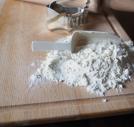Does Diabetes Affect Body Temperature?
Diabetes is a complex disease, affecting virtually every part of the body. The damage it does, to nerve endings, blood vessels, organs, and the brain, is the subject of many, many scientific research studies.
Several such studies have investigated the relationship between pancreatic secretions and core temperature changes. Findings from one study, conducted by the Scripps Research Institute and published in the January 2010 issue of the journal Diabetes, show that increases in pancreatic secretions cause a corresponding rise in core body temperatures.
Core Body Temperatures
Core body temperatures are those maintained within the trunk of the body and the head, which encompass all vital organs. Temperatures within the core generally remain fairly steady, with only slight variations, facilitating various enzymatic reactions. When core body temperatures go outside this narrow range for extended periods or to extreme levels, either becoming too low (hypothermia) or too high (fever), damage to the body occurs.
Limited changes in core body temperature are common, related, among other things, to female hormonal cycles, the 24-hour wake-sleep cycle and the effects of severe calorie restriction.
Brown Fat Cells
When insulin is either secreted by the pancreas or injected, changes occur in so-called ‘brown fat’ cells, resulting in an increase in core temperature and a corresponding acceleration in the rate of metabolism. Brown fat cells are adipose tissue that burns calories, rather than storing them, as white fat does.
The pathway of insulin to these brown fat deposits is through the brain. Scientists experimented on rats, which have large masses of brown fat on their backs. They injected the preoptic area of the brain with insulin and then electronically scanned the brown fat. The results show the brown fat became active, burning calories and releasing heat into the core.
Humans also have brown fat, especially in the area around their necks and collarbones. Scientists have noted that older people have less brown fat than younger people, and obese individuals have less brown fat than those who are lean.
Increased Metabolism
Next, scientists looked for evidence that the activation of the brown fat leads to increases in metabolism. By measuring oxygen consumption and carbon dioxide production, they were able to make this correlation.
While scientists have noted these reactions in mouse studies, they cannot yet explain them. In fact, while the study answered some questions, it opened others. For instance, how is it that the cells in the body are unable to accept insulin while cells in the brain are? How does insulin get into the preoptic area of the brain? Can a treatment be devised that will result in safe increases in metabolism, with the result of weight loss in humans?
This is one more important research program where, with further research, there is the hope of newer, more effective treatments for diabetic patients.
Sources: NewLifeOutlook.com
Photo: Pixabay



































